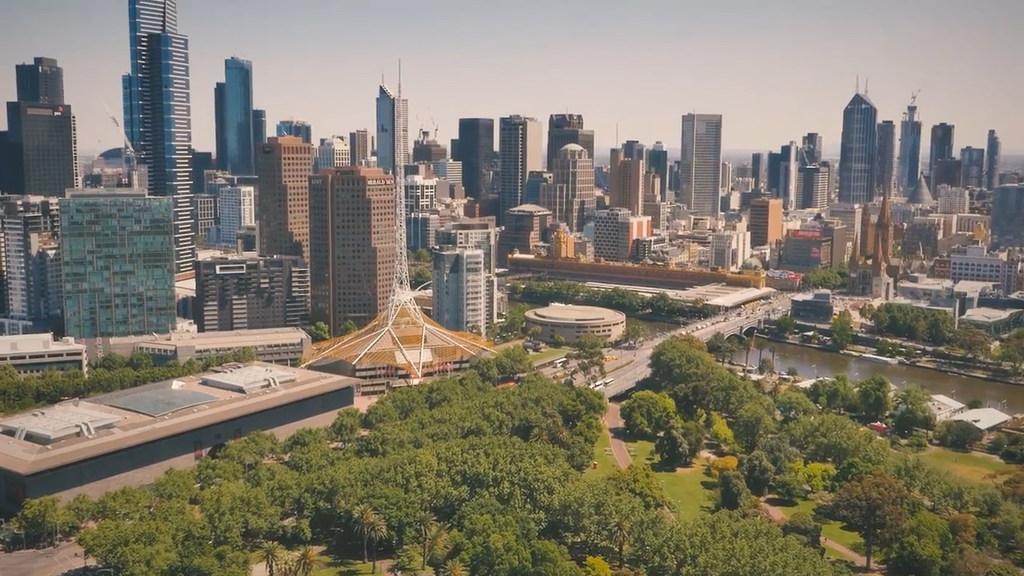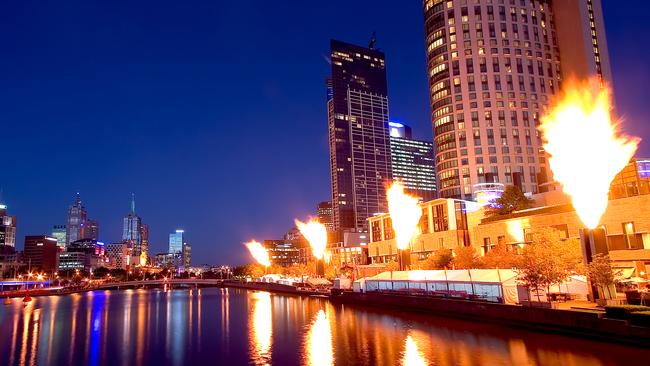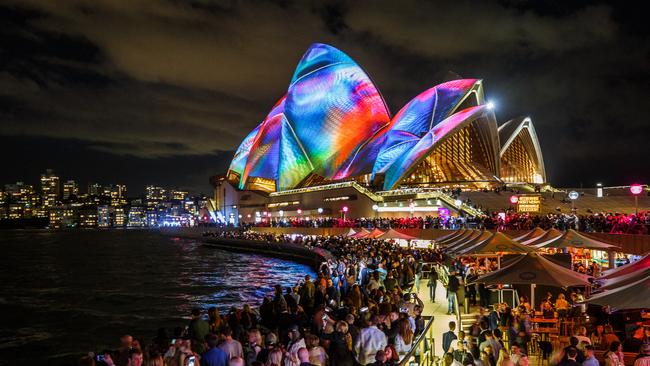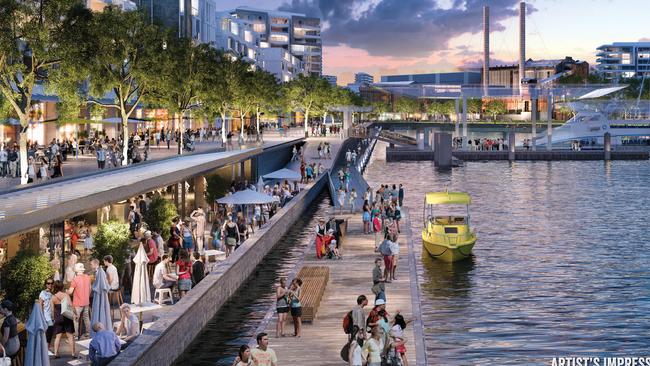Claims Sydney is in the midst of a ‘brain drain’ to Melbourne
MELBOURNE has struck further blows in its battle against Sydney, with more and more companies and people ditching the Harbour City.

WHEN Chinese tech giant Alibaba was searching for a beachhead city to set up its Australian operation you can be sure every capital would have been wooing its founder Jack Ma.
Melbourne won that battle and was treated to a glitzy launch in February from a man worth a cool $40 billion who runs a company with annual sales of half a trillion US dollars.
Critics are now saying an increasing number of highly paid, highly sought tech jobs has meant people are “fleeing Sydney in huge numbers” in favour of Melbourne.
Figures from the Australian Bureau of Statistics show that since 2013 Victoria has increased its population more than any other state in Australia.

With employers such as department store David Jones imminently moving its headquarters from Sydney to Melbourne, NSW Labor has claimed the state is suffering a “brain drain” to its southern neighbour.
A population expert has said the wealth of employment opportunities, and cheaper housing, are tempting people to cross the border.
The NSW Government has said a different metric, looking from March 2015 to May 2017, shows 40 per cent of new jobs in Australia occurred in the state.
Overall, Australia’s population is growing. At 1.5 per cent annually the growth rate is above the OECD average of 1.2 per cent.
But that growth is not equally spread. After almost a decade outstripping other states, Western Australia gave up its title of the fastest growing state in 2013, just as the mining boom peaked.
From being just the fourth most popular state for domestic and international migration, Victoria is now riding high at the top of the ladder.


Figures for the year to September show every state’s population grew. But while NSW and Queensland grew by 1.4 per cent — less than Australia overall — Victoria steamed ahead with a 2.1 per cent growth rate.
Overall, almost 12,000 people left NSW for other states and territories during that period, while Victoria gained 17,000 new residents.
Shadow NSW Treasurer Ryan Park told news.com.au workers were leaving NSW because it was now a less attractive place to do business than Victoria with has offered incentives to tempt big companies to Melbourne.
“Not only is the Berejiklian Government failing to keep residents in the state, they’re failing to attract big businesses including technology start-ups to set up shop here,” he said.
“The Premier’s done nothing to bring down the cost of living for people — it’s no wonder people are fleeing in huge numbers elsewhere.”
A clutch of overseas multinationals have chosen Melbourne over Sydney for their Australian head offices including Chinese tech giant Alibaba, cloud-based accounting company Xero and US technology company Go Pro.

After 178 years in Sydney, top-end retailer David Jones will soon pack its shopping bags and move its corporate office to Melbourne.
The Victorian Government didn’t disclose the value of the incentives it offered David Jones to head south and bring almost 1000 jobs to the state.
Ian Moir, the chief executive of South Africa’s Woolworths Holdings (no relation to Australia’s Woolworths) said the move to Melbourne was a “no-brainer”.
“Melbourne is the fashion capital of Australia, it is the retail hub of Australia, there is more of a talent pool here, the costs are cheaper,” he told the Herald Sun in August last year.
Mr Park said Google’s decision in April to back out of negotiations to move its Australian HQ to the former White Bay Power station had harmed Sydney’s reputation.
Dubbed ‘Silicon Harbour’, Google would have been the centrepiece of the Bays Precinct, 5.5 kilometres of harbour front, and 95 hectares of mostly government-owned land, turned into a hub for technology firms and start-ups.
“The technology hub at Rozelle is dead in the water because there was no adequate transport plan while other companies are setting up their HQs down south in droves because the Victorian government’s making them a better offer,” said Mr Park.
The loss of a high profile tenant such as Google was a “huge blow,” for Sydney, Peter Bishop, a professor of urban design at University College London told news.com.au at the time.
“You won’t get big people coming in without the infrastructure. It’s enormously difficult to refit the power station without an anchor tenant and it might mean rethinking what the strategy is.”
Google’s main Australian office is still in Sydney. Apple, Facebook and Amazon also have a presence in the Harbour City.

On Thursday, Treasurer Dominic Perrottet said more than 179,300 jobs have been created in NSW since the last election in March 2015, a rise of 4.9 per cent with the state adding almost 40 per cent of new jobs across the country.
“These stats show the NSW economy has been leading the way in jobs creation since we came to office, which is a vote of confidence in our economic management of the state,” he said.
Associate Professor Nick Parr, a demographer at Sydney’s Macquarie University, said the large number of international students in Victoria was fuelling population growth.
But the boom in Melbourne jobs was also attracting people from all over Australia as well as abroad.
“The major driver is employment opportunities but there is also a shortage of native born Victorians in the relevant age groups.”
In the 1990s, said Prof Parr, a fall in the number of children being born in Australia was felt most acutely in Victoria. This had led to a talent gap that migrants from overseas and interstate were filling.
“There was a slump of births in the 1990s and those people would now be aged between 17 and 27 and entering the workforce.
“This combination of good employment and cheaper, more affordable housing, is prompting that move.”
However, Prof Parr warned that while rising population growth was a sign of a good economy, it could also have its negatives.
Those cheaper house prices won’t last for long if the houses are all snapped up.
Melburnians may have all the jobs, but they could end up having a lower quality of life with rapidly densifying suburbs as people live in closer quarters and increasing congestion.




